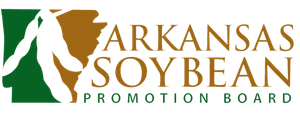Detailed Data Supports Irrigation Management Decisions
By Laura Temple
For farmers with fields under irrigation, water is another input to manage carefully. To make sound decisions, farmers need relevant tools and information.
“Soybean farmers can make the biggest gains in profitability and sustainability by improving when they first start irrigating a field and when to stop,” says Dr. Chris Henry, associate professor and water management engineer for University of Arkansas System Division of Agriculture. “Technology allows us to those decisions easier.”
Since 2019, the Arkansas Soybean Promotion Board has been funding an irrigation management research and education project Henry leads. His team developed a practical app. They also provide unique opportunities for farmers to improve irrigation management in soybeans: a practical workshop and an irrigation yield contest.
“It’s not about the technology, it’s about how water is managed at the field scale,” Henry says. “Farmers who have been engaged with this work are starting to think about water like other crop inputs.”
How much water and when do soybeans need it?
To answer this question for the Mid-South environment, members of the team, including Mukhammadzakhrab Ismanov, Paul Francis and Leo Espinoza, have been measuring the sap flow in soybeans.
A sap flow monitor attached to an individual plant measures water moving through the stem. After several days of measurement during a specific growth stage, all the leaves are removed to measure leaf surface area and figure water evaporation. The monitor is moved to another plant in the field at the next growth stage. Ismanov has repeated this process throughout the growing season for consecutive years, gathering an enormous dataset of the water soybeans use.
“We have used a wide variety of planting dates to gather this data for maturity groups common to this region, and we have added new information every year,” Henry says. “This critical data shows us the book data for soybeans was short 1 acre-inch of water per acre.”
With this information, the team developed an app that helps farmers figure out when to schedule irrigation. Each year, data from this work has made the app more robust and accurate. In 2022, Henry and Ismanov intend to take the sap flow meter to a high-yielding irrigated field to add recommendations for irrigation based on yield goals to the app.
But this is just part of the information needed for irrigation management.
How much water have soybeans received?
Farmers also need to understand what water soybeans have access to in the soil. Henry explains that soil sensors show farmers what is happening in the soil. His team’s app pulls in data from Watermark™ sensors installed in farmers’ fields to calculate when a field needs to be watered.
He says the sensors they use cost about $35 each, a price point that offers the potential to install a matrix of them at various depths. He recommends installing them at depths of 6, 12, 18 and 30 inches.
To train farmers to use these sensors, Henry’s team offers irrigation school. Attendees of these small-group workshops actually build their own soil sensor and learn how to install them correctly. Following the 2021 season, 250 Arkansas farmers had participated an irrigation school since the program began.
“Like our irrigation school, the app is actually a teaching tool that helps the irrigator predict when the next irrigation is needed,” he says. “Once farmers have experience with the sensors and the app, they learn what numbers mean and how to make decisions based on them. They can, in 30 seconds, take input sensor data, soils information, growth stage, allowable depletion and irrigate set time, and figure how many days they are from the next irrigation.”
How well can that water be managed?
Armed with this data, farmers can decide when to irrigate their soybeans, and when to terminate irrigation to let the crop mature. Those who want to evaluate how they apply this knowledge can enter the annual “Most Crop per Drop” Irrigation Yield Contest.
The contest includes categories for soybeans, corn and rice. Participants have their water used monitored throughout the season can compared to yield, and winners receive cash and other prizes from association and industry sponsors. For example, the Arkansas Soybean Promotion Board offers cash prizes for first, second and third place in the soybean category.
“We measure water-use efficiency, or ‘crop per drop,’” Henry explains. “Participants receive a report card after the season so they can see how well they actually manage their water and yields. Farmers are competitive, so this helps them document improvement. It’s also something they can use to benchmark their irrigation management to their peers.”
Russ Parker and Travis Clark, members of his team managing the contest, have seen farmers make significant progress over time. The first year, achieving a water-use efficiency of 4 bushels/acre-inch was rare. Now, three or four contestants reach that level. And yields are high while still achieving a high water-use efficiency. In 2021, they documented the highest water-use efficiency ever recorded in the four-year history of the contest.
“Farmers focus on profitability,” he adds. “These tools and programs help them improve this aspect of their operation, and in doing so, they are demonstrating the sustainability of the Arkansas soybean industry.”
For more information about this project, visit the National Soybean Checkoff Research Database.
